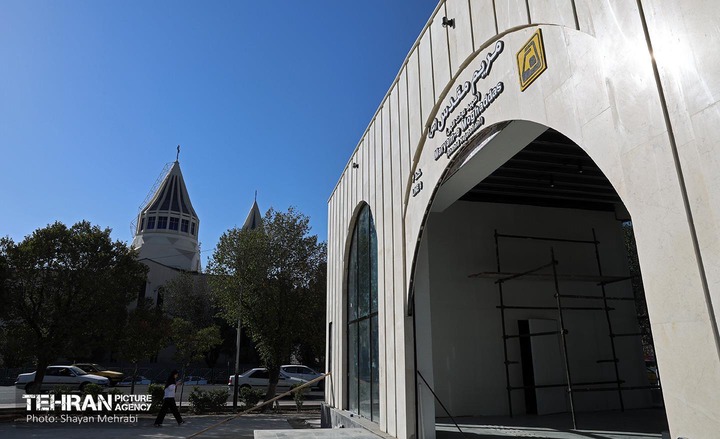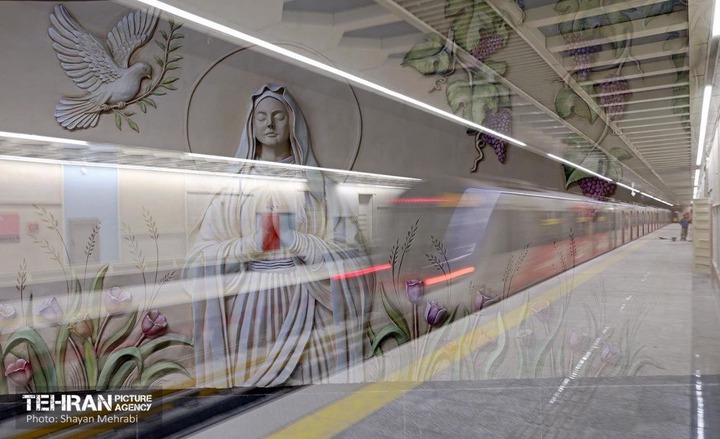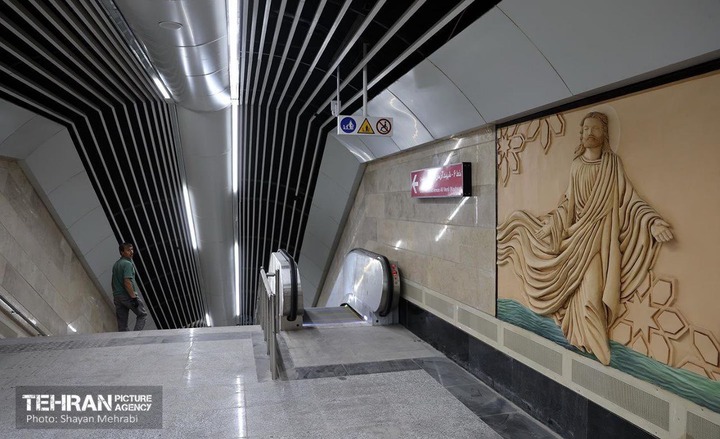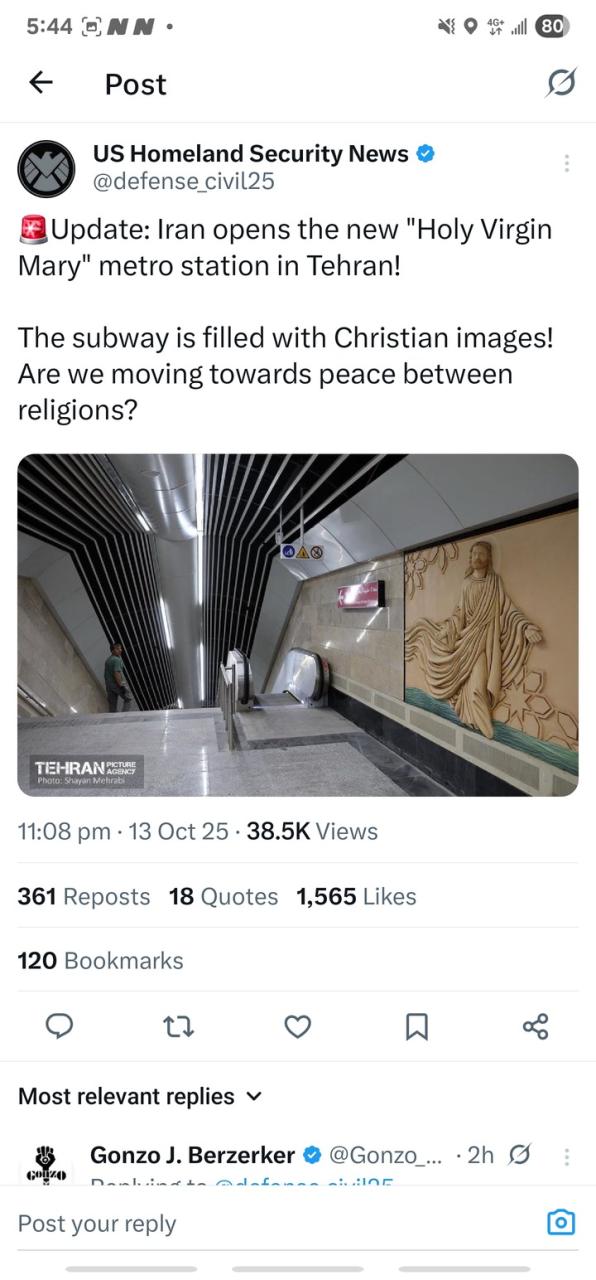Religious harmony as Islamic Republic of Iran opens new “Holy Virgin Mary” metro station in Tehran

According to the US Homeland Security News report on Monday October 13, 2025, Iran has unveiled a striking new addition to its Tehran Metro network: the “Holy Virgin Mary” station, adorned with intricate Christian iconography that pays homage to one of Christianity’s most revered figures.
The station’s opening, celebrated with a ribbon-cutting ceremony attended by government officials and religious leaders, features murals, mosaics, and stained-glass depictions of the Virgin Mary, drawing from both Islamic and Christian artistic traditions.
This initiative reflects Iran’s longstanding recognition of Mary—known as Maryam in Islam—as a prophet and symbol of purity, underscoring shared Abrahamic heritage. The project, part of a broader urban renewal effort, aims to enhance public transportation while promoting cultural inclusivity.The station’s design incorporates elements from Persian miniature paintings and Byzantine influences, creating a visually stunning environment that has captivated commuters and visitors alike.
Images circulating online show passengers pausing to admire the artwork, with families photographing the serene portrayals of Mary and the infant Jesus. Iranian state media highlighted the station as a testament to the country’s constitutional protections for religious minorities, including its approximately 300,000 Christians. This development arrives at a time when global interfaith tensions are high, positioning Iran as an unexpected beacon of religious tolerance.

Public response has been overwhelmingly positive, with social media users hailing the station as a step toward greater unity among Muslims, Christians, and other faiths within Iran. Comments emphasized Islam’s reverence for Jesus and Mary, countering Western stereotypes of Iranian society as monolithic or intolerant. Religious scholars noted that such gestures align with Quranic verses extolling Mary’s virtues, fostering dialogue rather than division.
Critics abroad, however, remain wary, viewing it through the lens of geopolitical rivalries, though domestic voices argue it strengthens social cohesion amid economic challenges.The “Holy Virgin Mary” station symbolizes a potential shift in Iran’s public narrative, blending modernity with spiritual depth to encourage cross-cultural appreciation.

As Tehran expands its metro system, future stations may continue this theme, integrating motifs from Zoroastrianism, Judaism, and other traditions. In an era of rising extremism, this initiative invites reflection on how infrastructure can serve as a canvas for peacebuilding. Ultimately, it challenges assumptions and invites the world to reconsider narratives of division, pointing toward a more harmonious religious landscape.





